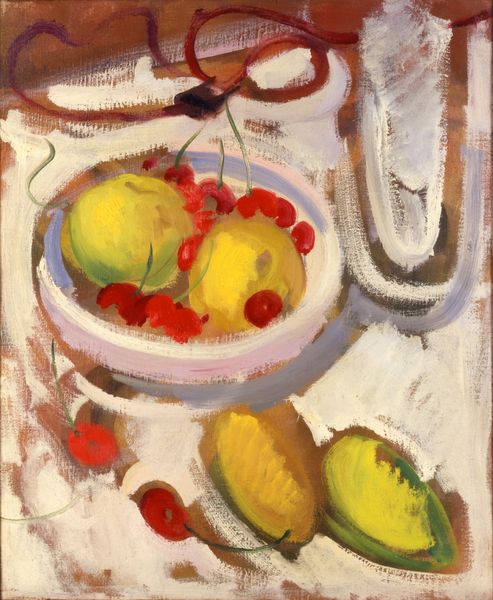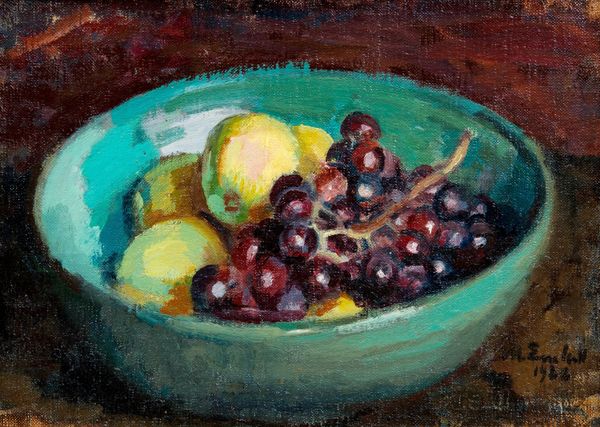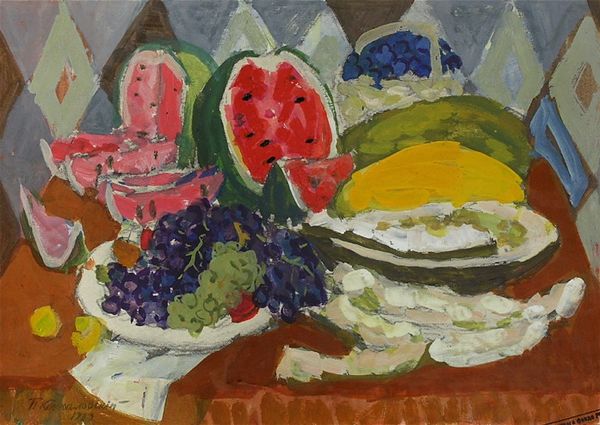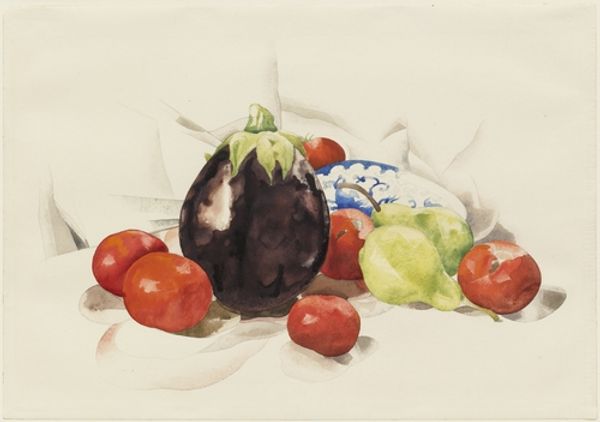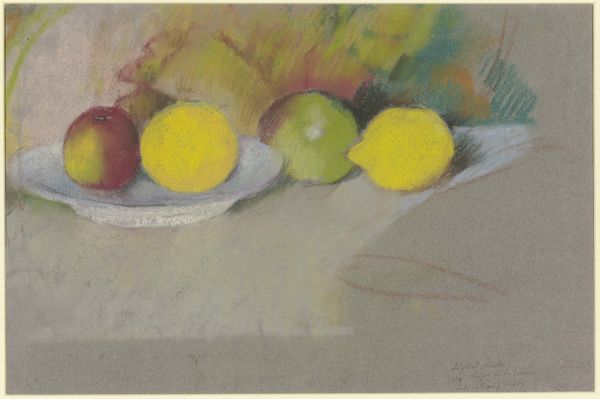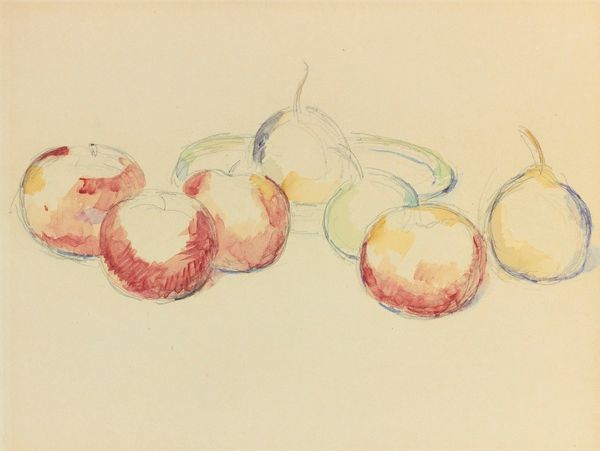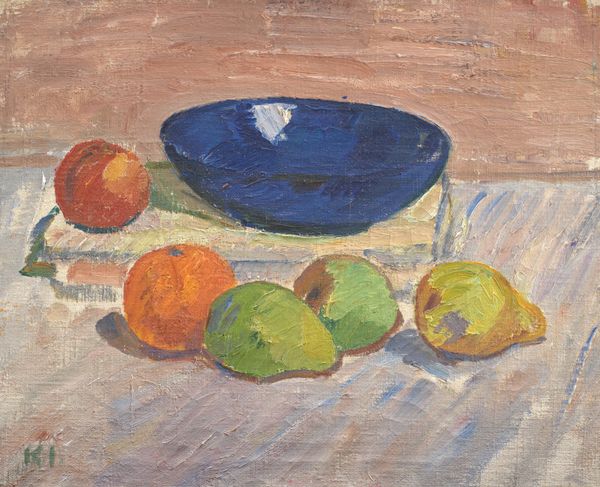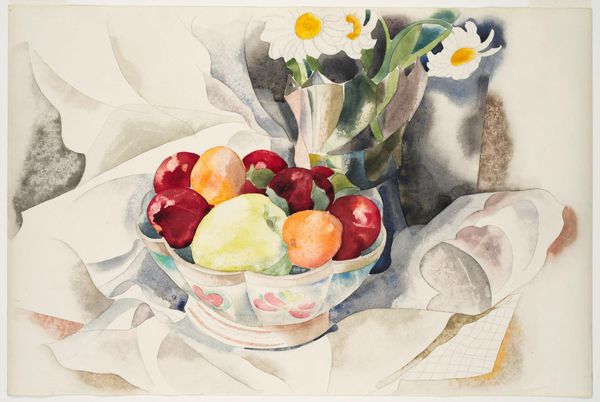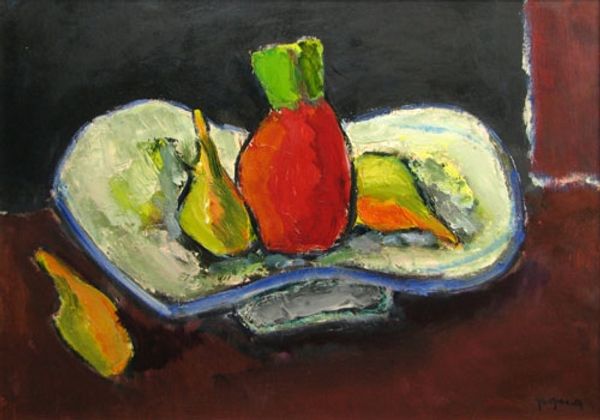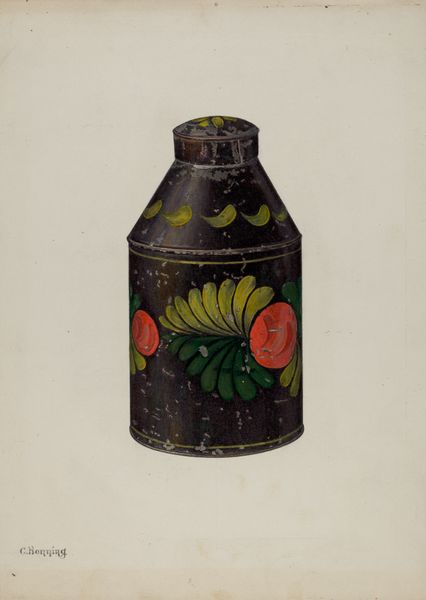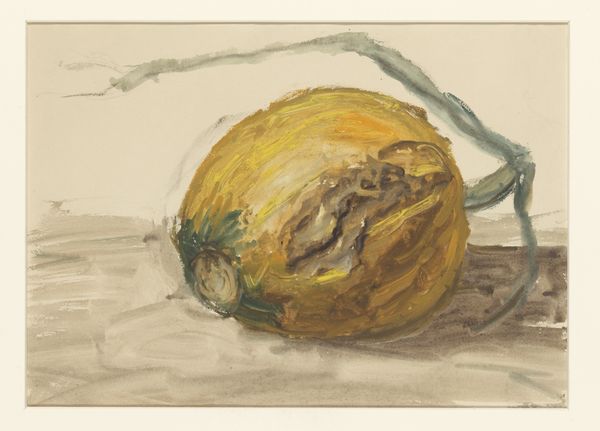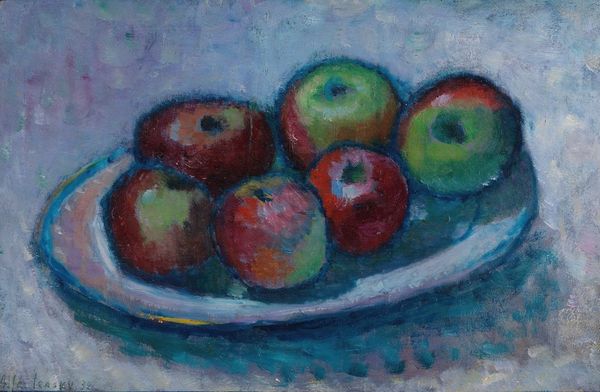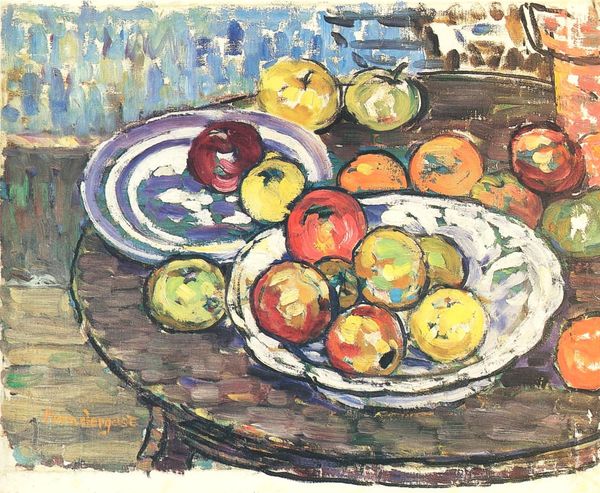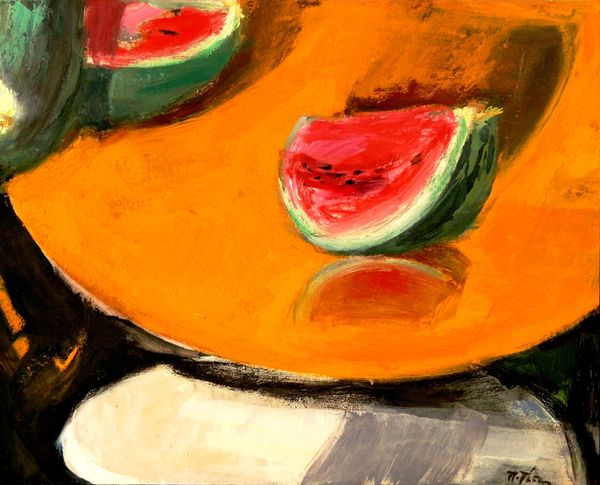
painting, oil-paint
#
painting
#
oil-paint
#
oil painting
#
genre-painting
#
academic-art
#
realism
Dimensions: overall (oval): 27.94 × 35.56 cm (11 × 14 in.) framed: 49.53 × 57.15 × 9.53 cm (19 1/2 × 22 1/2 × 3 3/4 in.)
Copyright: National Gallery of Art: CC0 1.0
Editor: We’re looking at “Watermelon and Grapes,” an 1863 oil painting by John F. Francis. It’s a relatively small oval, dominated by, well, watermelon and grapes. It feels very immediate and accessible, somehow. What strikes you when you look at this? Curator: It evokes a specific type of abundance, doesn't it? Think about the symbolism of fruit throughout art history. Here, the ripe watermelon and grapes might suggest prosperity and fertility, but in the context of 1863, during the Civil War, does this image also serve as a reminder of summer’s ephemeral nature, a brief moment of sweetness amidst a time of upheaval and anxiety? Editor: That’s a really interesting point. I hadn’t considered the Civil War connection at all. Does the breaking apart of the watermelon itself, almost a violent act, also play into that tension? Curator: Absolutely. Consider how still life, seemingly benign, has been used politically throughout history. Think about food shortages and wartime, how daily abundance may appear quite differently. Do the seeds that fell from the fruit also bring to mind a certain symbolism about nature or agriculture in general? Editor: The idea of hope for future harvests, maybe? I do like the link between fruit and agriculture in general. It definitely resonates beyond just being a simple picture of fruit. Thanks, I’m going to think more about the era when I look at this again. Curator: Indeed, context reframes how we see the imagery and how it functions as more than the sum of its painted parts. Visual language often evolves over time, yet it's deeply entwined with human perception and societal history.
Comments
No comments
Be the first to comment and join the conversation on the ultimate creative platform.
